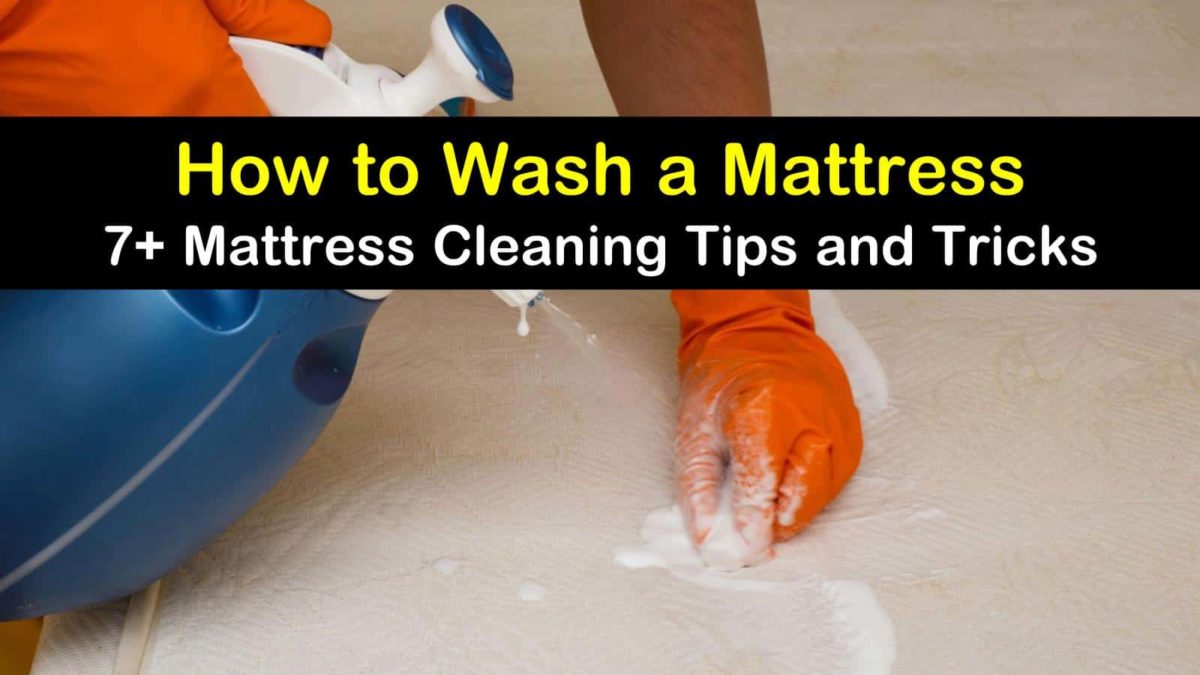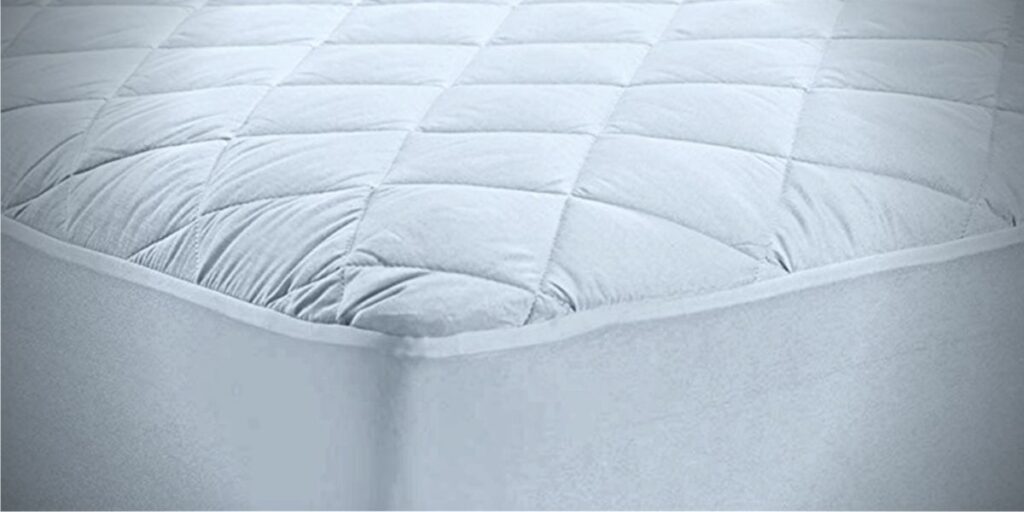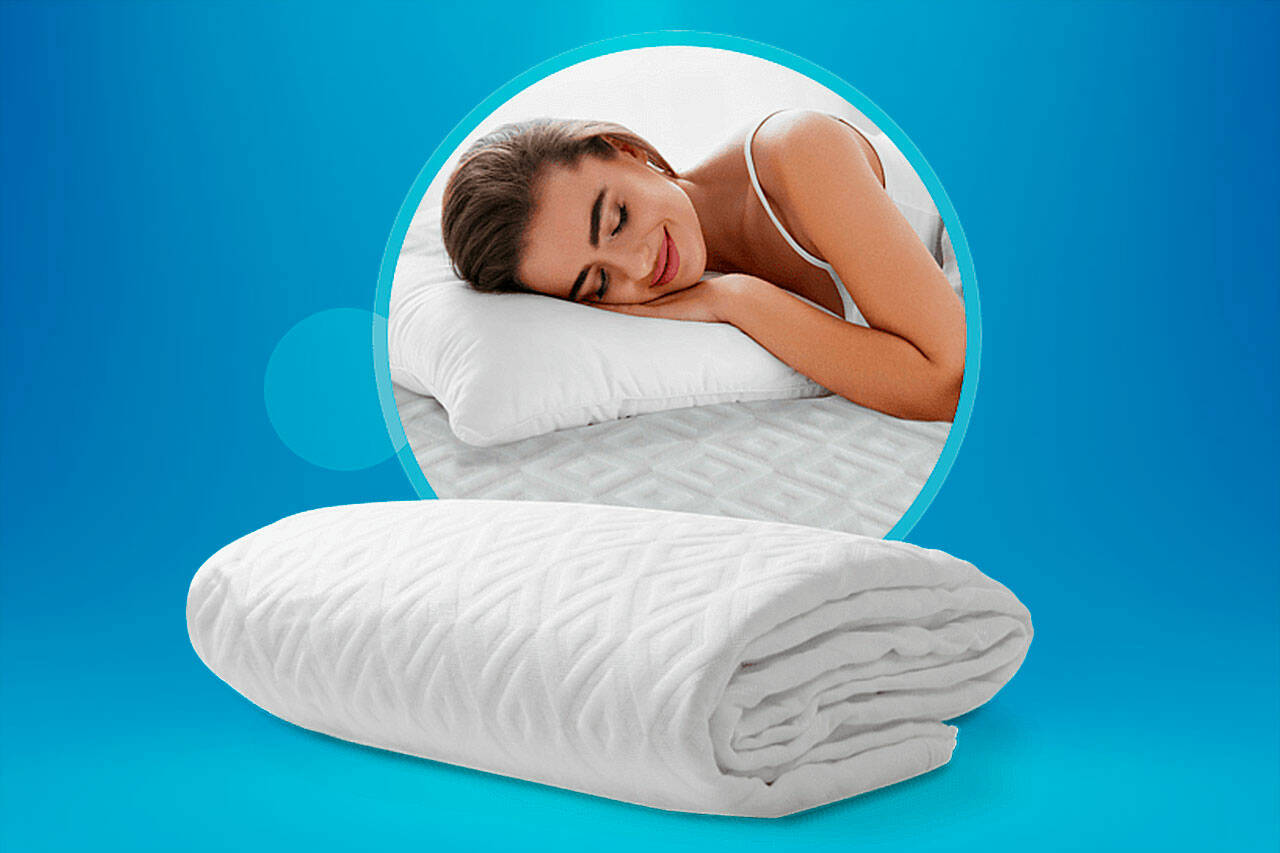Mattress protectors are an essential part of maintaining a clean and hygienic sleeping environment. They act as a barrier between you and your mattress, protecting it from spills, stains, and bacteria. However, over time, they can also accumulate dirt and grime, which can affect their effectiveness. That's why it's essential to know how to properly wash your mattress protector to keep it clean and in good condition. In this article, we'll discuss the best techniques for washing your mattress protector and keeping it in tip-top shape.How to Wash a Mattress Protector
Before we dive into the step-by-step guide, let's go over the dos and don'ts of washing a mattress protector. These tips will help you avoid any potential damage and ensure that your protector is thoroughly cleaned. Do:The Dos and Don'ts of Washing a Mattress Protector
Now that you know the dos and don'ts let's go through the step-by-step guide for washing your mattress protector. Step 1: Pre-treat any stains If your mattress protector has any stains, it's best to pre-treat them before washing. Follow the instructions on your stain remover and allow it to sit for a few minutes before washing. Step 2: Check the care label Before washing, always check the care label on your mattress protector for specific instructions. This will ensure that you're following the correct method for your particular protector. Step 3: Place in the washing machine Place your mattress protector in the washing machine, making sure that it's not overloaded. If your protector is extra large, it may be best to wash it separately. Step 4: Add detergent Add a mild, non-bleaching detergent to the washing machine. Avoid using fabric softener or bleach, as they can damage the fabric and the waterproof layer. Step 5: Set the water temperature Set the water temperature to cold or warm, as hot water can damage your mattress protector. Follow the care label for specific temperature recommendations. Step 6: Start the wash cycle Start the wash cycle and let your mattress protector go through a full cycle. Step 7: Hang to dry Once the washing cycle is complete, remove your mattress protector from the machine and hang it to dry. Avoid wringing it out, as this can damage the fabric and the waterproof layer.Step-by-Step Guide to Washing a Mattress Protector
Washing your mattress protector regularly is essential for maintaining a clean and hygienic sleeping environment. Here are some reasons why you should make it a part of your cleaning routine. Keeps your mattress clean: Your mattress protector acts as a barrier between you and your mattress, preventing spills, stains, and bacteria from seeping into your mattress. By washing it regularly, you're also keeping your mattress clean and prolonging its lifespan. Prevents allergies: Dust mites, dead skin cells, and other allergens can build up on your mattress protector over time. Washing it regularly can help reduce the risk of allergies and improve air quality in your bedroom. Removes odors: Over time, your mattress protector can start to develop odors from sweat, spills, and other sources. Washing it regularly helps to remove these odors, leaving your protector smelling fresh and clean.Why You Should Wash Your Mattress Protector Regularly
As mentioned earlier, it's recommended to wash your mattress protector every 1-2 months. However, if you have pets, allergies, or are prone to spills and accidents, you may want to wash it more frequently. Use your judgment and assess the condition of your protector regularly to determine when it needs to be washed.How Often Should You Wash a Mattress Protector?
Yes, you can put your mattress protector in the washing machine. Just make sure to follow the care instructions and avoid using hot water, fabric softener, and bleach.Can You Put a Mattress Protector in the Washing Machine?
It's best to wash your mattress protector in cold or warm water. Hot water can damage the fabric and the waterproof layer, reducing its effectiveness.What Temperature Should You Wash a Mattress Protector?
It's best to air dry your mattress protector to prevent shrinkage and maintain its shape. Avoid using high heat or wringing it out, as this can damage the fabric and the waterproof layer.How to Dry a Mattress Protector
No, it's not recommended to use fabric softener when washing a mattress protector. Fabric softener can leave residue on your protector, reducing its effectiveness.Should You Use Fabric Softener When Washing a Mattress Protector?
If your mattress protector has any stains, pre-treating them before washing is the best way to remove them. You can also use a mild stain remover or a mixture of baking soda and water to spot clean any stains. Always follow the care instructions on your mattress protector and avoid using harsh chemicals or scrubbing too vigorously, as this can damage the fabric. In conclusion, washing your mattress protector regularly is crucial for maintaining a clean and hygienic sleeping environment. By following these tips and techniques, you can keep your protector in excellent condition and prolong its lifespan.How to Remove Stains from a Mattress Protector
Why Washing Your Mattress Protector is Essential for a Clean and Healthy Bedroom

The Importance of a Mattress Protector
 A good night's sleep is crucial for our physical and mental well-being. And one key factor in achieving this is having a clean and comfortable bed to sleep on. This is where a
mattress protector
comes in. It acts as a barrier between you and your mattress, protecting it from spills, stains, dust, and dirt. But over time, your mattress protector can also accumulate dirt and allergens, which is why it's important to regularly wash it.
A good night's sleep is crucial for our physical and mental well-being. And one key factor in achieving this is having a clean and comfortable bed to sleep on. This is where a
mattress protector
comes in. It acts as a barrier between you and your mattress, protecting it from spills, stains, dust, and dirt. But over time, your mattress protector can also accumulate dirt and allergens, which is why it's important to regularly wash it.
Keeping Your Mattress Clean and Hygienic
 While your sheets and pillowcases may be washed regularly, your mattress protector is often overlooked. But just like any other item in your bedroom, it needs to be cleaned too. Over time, sweat, dead skin cells, and body oils can seep into your mattress protector, creating the perfect breeding ground for bacteria, dust mites, and other allergens. This can not only affect the quality of your sleep but also pose a threat to your health. Regularly washing your mattress protector is crucial in maintaining a clean and healthy sleeping environment.
While your sheets and pillowcases may be washed regularly, your mattress protector is often overlooked. But just like any other item in your bedroom, it needs to be cleaned too. Over time, sweat, dead skin cells, and body oils can seep into your mattress protector, creating the perfect breeding ground for bacteria, dust mites, and other allergens. This can not only affect the quality of your sleep but also pose a threat to your health. Regularly washing your mattress protector is crucial in maintaining a clean and healthy sleeping environment.
How Often Should You Wash Your Mattress Protector?
 The frequency of washing your mattress protector depends on your personal preference and lifestyle. If you have allergies or respiratory problems, it's recommended to wash it every 1-2 weeks. For those without allergies, washing it every 3-4 weeks is sufficient. However, if you or your partner sweat a lot or have pets that sleep on the bed, it's best to wash it more frequently to prevent lingering odors and bacteria buildup.
The frequency of washing your mattress protector depends on your personal preference and lifestyle. If you have allergies or respiratory problems, it's recommended to wash it every 1-2 weeks. For those without allergies, washing it every 3-4 weeks is sufficient. However, if you or your partner sweat a lot or have pets that sleep on the bed, it's best to wash it more frequently to prevent lingering odors and bacteria buildup.
The Proper Way to Wash Your Mattress Protector
 Washing your mattress protector is a simple process, and most can be machine washed. First,
remove any stains
by spot cleaning with a mild detergent and warm water. Then, follow the care instructions on the label and wash it in hot water with a gentle detergent. Avoid using harsh chemicals or bleach, as they can damage the fabric and reduce its effectiveness. Once washed, dry it on a low heat setting or hang it to air dry. It's also important to
thoroughly dry
your mattress protector to prevent mold and mildew growth.
Washing your mattress protector is a simple process, and most can be machine washed. First,
remove any stains
by spot cleaning with a mild detergent and warm water. Then, follow the care instructions on the label and wash it in hot water with a gentle detergent. Avoid using harsh chemicals or bleach, as they can damage the fabric and reduce its effectiveness. Once washed, dry it on a low heat setting or hang it to air dry. It's also important to
thoroughly dry
your mattress protector to prevent mold and mildew growth.
Final Thoughts
 In conclusion, washing your
mattress protector
is essential for maintaining a clean and healthy bedroom. It not only helps prolong the life of your mattress but also improves the quality of your sleep. So, don't overlook this simple task and make it a part of your regular cleaning routine. Your body and mind will thank you for it.
In conclusion, washing your
mattress protector
is essential for maintaining a clean and healthy bedroom. It not only helps prolong the life of your mattress but also improves the quality of your sleep. So, don't overlook this simple task and make it a part of your regular cleaning routine. Your body and mind will thank you for it.







:max_bytes(150000):strip_icc()/how-to-wash-mattress-protector-5220415-hero-ef3d29e5dac34ab8a6482dc4e31a1252.jpg)




























































_zoom.jpg?1652845992)


































